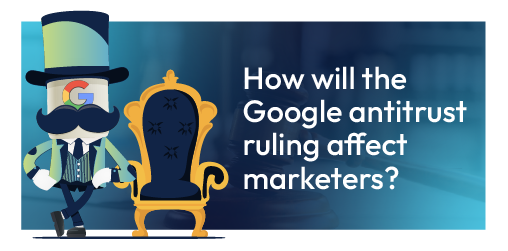The Evolution of SEO

SEO influences innumerable aspects of content creation and digital marketing, from product descriptions to blogs and whitepapers. Using techniques like keyword incorporation in key phrases, backlinking, and strategic meta titles and descriptions, it's possible to drive traffic to a site to gain leverage over the competition.
Have you ever wondered how search engine optimization (SEO) came to be? The story is fascinating! Because we’re all about SEO here at RivalMind, we decided to share the story.
We’ll start at the very beginning…
The Very Beginning
SEO dates back to the early days of the internet, the World Wide Web. and the launch of what influenced modern search engines. Search engines, even in their earliest and most rudimentary forms, sorted results somehow, using data collected by web crawlers to categorize and index millions of sites around the web.
Original search engines were closer to a standard index, much like an old school phone book, but by the early to mid-90s, that started to change. With Excite in 1993 and Alta Vista and Yahoo! in 1994, the landscape of search began to evolve rapidly with the progressing decade. Additionally, nothing made a mark on the formation of the current state of the web like the launch of BackRub in 1996 that evolved into Google the following year. As the undisputed leader of the web, Google has done more to influence SEO than any of its competitors.
When SEO was first being developed, web designers would actually do very little. The process simply involved providing various search engines with URLs. At this point, search engines would crawl the page, extract links, and return the information on the page.
The Wild West of SEO
In the early days of search engines, there were few rules in place. Algorithms that generated results were limited in scope and pulled primarily based on the content of a site itself, so marketers began to see the value in keyword stuffing. Keyword stuffing involved using the same keywords over and over to increase the likelihood of showing up in rankings.
Stuffing worked quite well for a time, but it led to web users finding spammy pages that existed solely for the ad revenue rather than sites that added value and provided legitimate information. Quality content was often overshadowed and outranked, causing the real ‘meaty’ and informative webpages to be lost under mountains of keyword-stuffed refuse.
Eventually, Google picked up on this and took action.
Want a free same-day SEO health scan?
No strings attached - receive a comprehensive report covering 140 unique data points about your website's technical SEO health in 24 hours or less!
Free SEO Health Scan - The Evolution of SEO
The Evolving State of Algorithms (1997 to Mid-2000s)
In response to keyword stuffing, Google updated its algorithm to provide quality results, rather than results based on keyword frequency. This kicked off Google's history of continually changing algorithms to deliver the best possible sites to web users. Some updates have been more notable than others.
Every year following brought numerous new changes, named and unnamed, refining how and why websites rank in search results for various queries.
- The Panda update, rolled out in 2011, changed SEO forever. Low quality and redundant content was severely penalized in search result rankings. Virtually overnight, millions of sites plunged in the rankings, disrupting revenue streams for the countless companies that still relied on antiquated techniques. Considered one of the largest changes in search engine history, Google's dramatic actions with Panda serve to demonstrate how serious the brand emphasizes quality content over quantity.
- Penguin launched in 2012, taking Panda a step further by penalizing sites with inappropriate approaches to backlinking and extensive keyword stuffing.
- 2013 brought the Hummingbird update, improving how Google processes search queries.
- In 2014, the Pigeon update cracked down on improper use of local SEO.
- Mobilegeddon, as 2015's algorithm update was affectionately nicknamed, took issue with mobile search engine use, penalizing sites that aren't responsive or did not exist in a mobile-friendly version.
- Possum, in 2016, took local SEO a step further, improving results based on location services and geographical proximity to storefronts.
- In 2017, the Fred update cracked down on sites that violate Google's webmaster rules.

SEO Today
Today, search engines like Google are doing a great job identifying websites that provide valuable content. To encourage this, websites that follow the outdated, keyword-stuffing model are penalized. Web designers must now focus on a combination of strategically placed keywords, valuable content, images and videos, and proper tags and descriptions to improve their SEO efforts.
In the modern era, as in the past, SEO is absolutely critical. Utilizing best-practices is extremely important to businesses that wish to maintain a presence on the web. Failing to dive into SEO is a disadvantage, guaranteeing a loss in visibility.
SEO is far more comprehensive than ever before, touching a litany of areas, from social media posts to local strategies. Marketers are forced to adopt a multi-pronged approach, utilizing as many strategies as possible to build a strong website, hitting on the points Google has emphasized to maintain a competitive edge.
Common, modern day tactics include:
- Strategic use of keywords and phrases
- Effective, honest backlinking
- Following guidelines for Meta titles, tags, and descriptions
- Responsive web design or separate mobile and desktop-friendly sites
- Proper social media protocol, including sharing text and visual content
- High quality and unique content
- Sites that offer a positive user experience
- A focus on long-form content
- Fast loading times
- Local SEO when appropriate, including Google Business Profile optimization
Results-Driven SEO With RivalMind
Since SEO was first created to present day, many changes have taken place. One can only expect that those changes will continue, which means we will be looking at an entirely different process in a few years' time. Because of this, learning more about the proper use of SEO is the best way to ensure your website is designed properly.
To learn even more about SEO and the best ways to manage it, check out our SEO services.

Meet the Author
Matt Scroggs
CMO RivalMind
Hi, I'm Matt Scroggs, a digital marketing strategist. For two decades I served as the senior digital marketer for several global, iconic brands. Today, I'm the chief marketing officer at RivalMind, an agency 100% dedicated to helping companies thrive by driving transformational growth through innovative digital marketing. I'm also a lifelong Cubs fan, a faithful family man, and a web analytics junkie—relentlessly tracking conversions, loyalty, and advocacy, which are often as elusive as the pennant!
Specialties: Helping Businesses Grow, Marketing Strategy, Idea Guy
Looking for more organic website traffic?
Welcome to RivalMind. Our purpose is to help your business thrive. We are a digital marketing agency that offers SEO, PPC, Web Design, Social Media and Video Solutions as tools to our clients for online business development and growth.
Contact us today to get started!
Blog Contact Form
Connect with Us:








